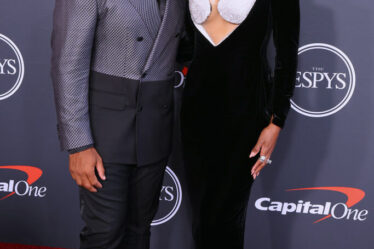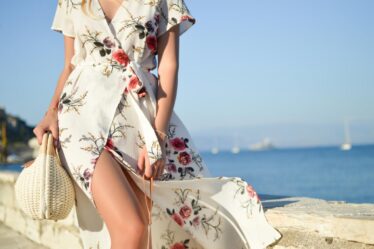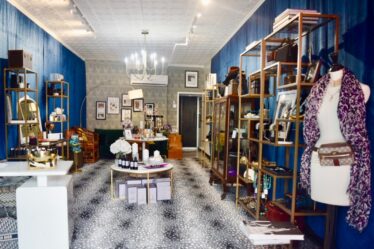
On the second episode of the fourth and final season of “Succession,” HBO’s megahit show about an ageing media tycoon and his dysfunctional relationships with his four adult children, onetime golden child Kendall Roy wears, what, to the average observer, would appear to be a casual, low-maintenance outfit of a zip-up hoodie and a baseball hat.
That relaxed sweatshirt, however, was Tom Ford and cost $1,390. The grey, unembellished cap was from Italian luxury label Loro Piana, and retails for $1,395. Combined, they were the embodiment of the “quiet luxury” look.
Call it “quiet luxury,” “stealth wealth,” or the most blunt, “low-key rich bitch,” the trend is perhaps best encapsulated by the phrase “if you know, you know.” It’s a pair of navy trousers, a white button-down or a cashmere coat, but made from the finest fabrics, in carefully-crafted cuts, sold at an eye-popping price. It’s Gwyneth Paltrow’s sleek, unfussy courtroom outfits, like a simple black skirt and sweater that just happens to be Prada, or the head-to-toe neutral ensembles from The Row that Cate Blanchett wore in the film Tàr.
And now that pop culture has introduced the concept to the masses, brands far below the Loro Piana price point are striking while the trend is hot. But before any of these brands can get a piece of the action, they first have to answer a tricky question: how to participate in a trend that is defined first and foremost by its sky-high price point.
For contemporary brands that have sold staple items like trousers, suiting and cashmere sweaters for decades, it’s mostly about highlighting the standard assortment and assuming customers will make the connection to quiet luxury on their own. Mass-market chains have to do a bit more work; Banana Republic can emphasise that it sells suits made in Italian mills, a quality it shares with luxury labels like Brunello Cucinelli. Even Shein has occasionally included “quiet luxury” in its ever-changing assortment.
Fast fashion aside, more-affordable brands are finding a receptive audience. For consumers outside the 0.1 percent, it’s the “quiet” in quiet luxury that matters most.
“The psyche of the customer today, people are attracted to buying luxury goods that have longevity,” said Robert Burke, chief executive of retail consultancy Robert Burke Associates. “The idea of buying disposable or flashy fashion at this particular moment doesn’t feel as right as it did a couple of years ago.”
Wealth Whispers
The current economic climate, which has made consumers both more cost conscious and increasingly wary of splashy, overly-logoed looks. The “nepo baby” conversation may also be playing a role in convincing some wealthy individuals to fly under the radar.
“It’s a mirror to the current economic climate,” said Heather Kaminetsky, the North American president at Mytheresa. “There are times in the world where everything’s great and people want to show off, but right now, everyone’s a little bit uncertain.”
That uncertainty is leading people to purchases that seem like safe bets — staple items that will work in their wardrobes for years to come, even if stealth wealth isn’t the trend du jour.
“People are actually wanting to invest in quality pieces, rather than chasing trends that might change from season to season,” said Sarah LaFleur, founder of women’s clothing brand M.M.LaFleur.
Sam Lobban, EVP and general merchandising manager of apparel and designer at Nordstrom, said brands that sell quiet luxury staples — cashmere sweaters, suiting separates, classic button-downs — at a lower price point are seeing traction. A Vince cashmere sweater, for example, will run around $400, while a Brunello Cucinelli counterpart can cost anywhere from $1,000 to $2,300.
Lobban added that the consumer appetite for these more subtle pieces “is something that we’re reflecting in what we put in our most prominent displays in-store or online.”
Theory, as well, is grouping some of its most popular essential items into capsule collections that never go on sale.
In the mass market, brands lean more explicitly on the concept of creating “the look” for less. At Banana Republic, that comes down to focussing on fabrics like linen, leather and cashmere in neutral hues across classic, timeless styles.
Banana Republic, which mounted a turnaround plan in 2021 after several tough years, is promoting foundational pieces with a point-of-view, which often slot easily into the quiet luxury trend. Unique, yet broadly appealing offerings are easier to sell at full price and can command a higher price point than generic designs. A suede trench dress, for instance, costs $900.
“We are incredibly fortunate to be very well positioned for this” quiet luxury trend, said Jemma Cassidy, Banana Republic’s head of merchandising.
Quiet luxury’s rise in the zeitgeist is also boosting brands. Sarah LaFleur, founder of women’s clothing brand M.M.LaFleur, for example, said that when the brand was cited in a Daily Mail article about Succession-inspired fashion, it drove an uptick in sales.
However, at a certain price point, quiet luxury may be beyond reach. A contemporary or mid-price brand may not be able to quite muster up quality that matches the Loro Pianas of the world, it can at least compare.
“It’d be hard for fast fashion to do it, and I’m not necessarily sure if that might be the consumer either,” said Cassidy.
But that hasn’t stopped them from trying: Shein currently has a quiet luxury landing page on its website.
Of course, there’s an appeal to quiet luxury that stretches beyond forgoing the flashy in the time of an economic downturn. The subtlety of it all has enduring appeal: Wearing a gorgeous coat, or a sleek shirt without a large logo or over-the-top details, earns double takes from those in the know.
To that same point, however, to the standard-bearers of quiet luxury, mass-market options will likely never actually compare.
“Anyone who is wealthy can discern it,” said Milton Pedraza, CEO of the Luxury Institute. “It’s part of the tribal code.”



